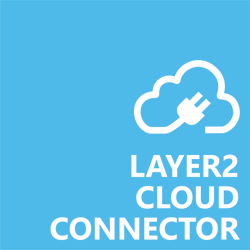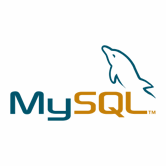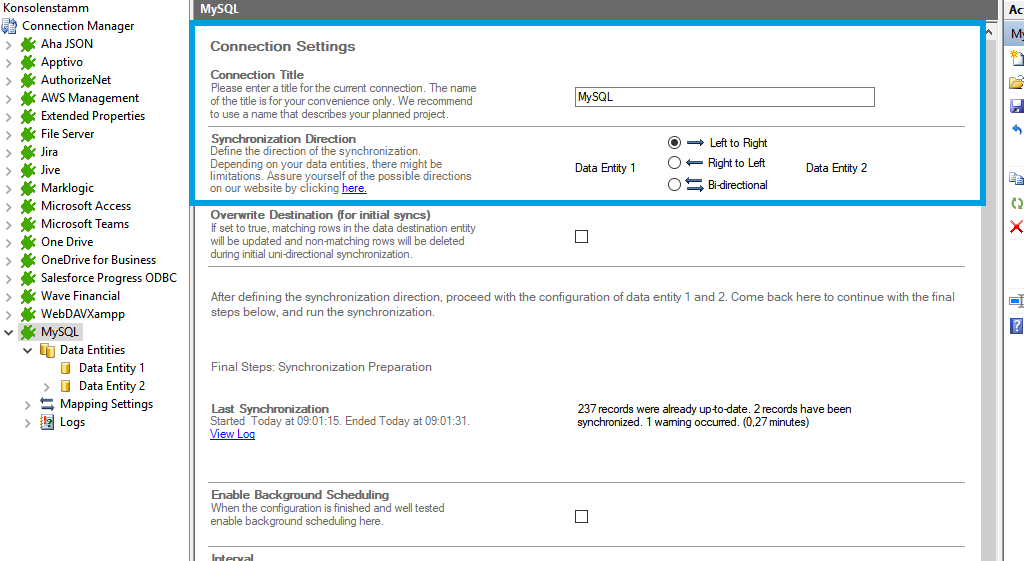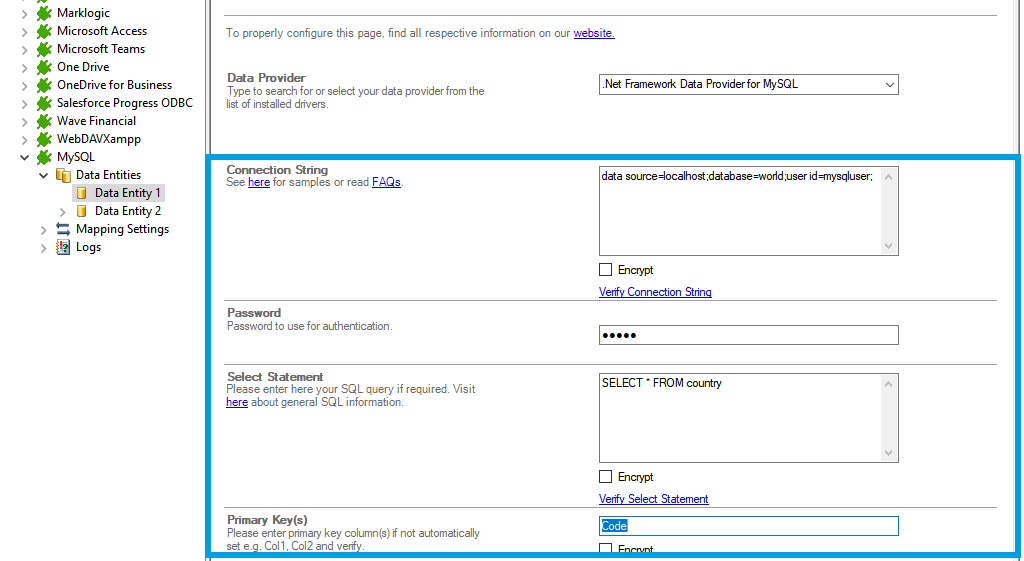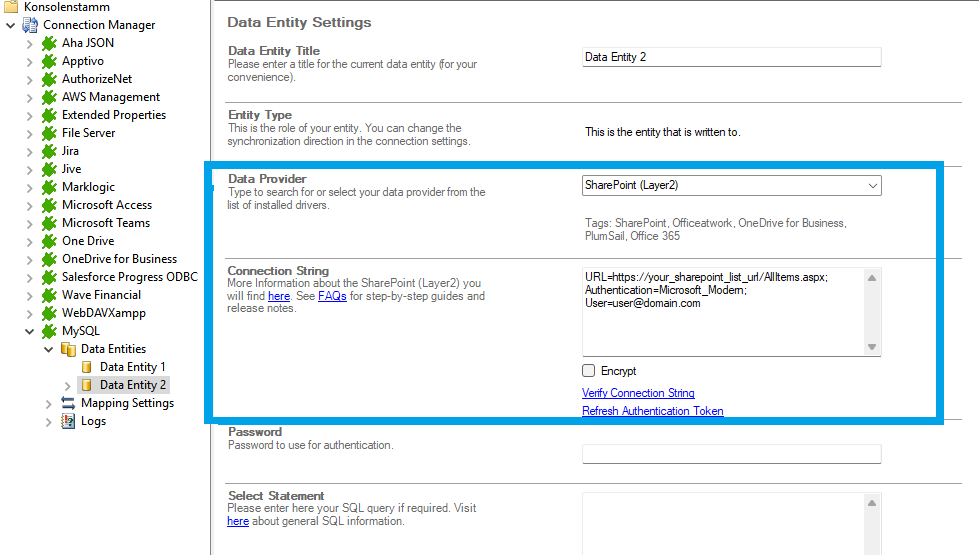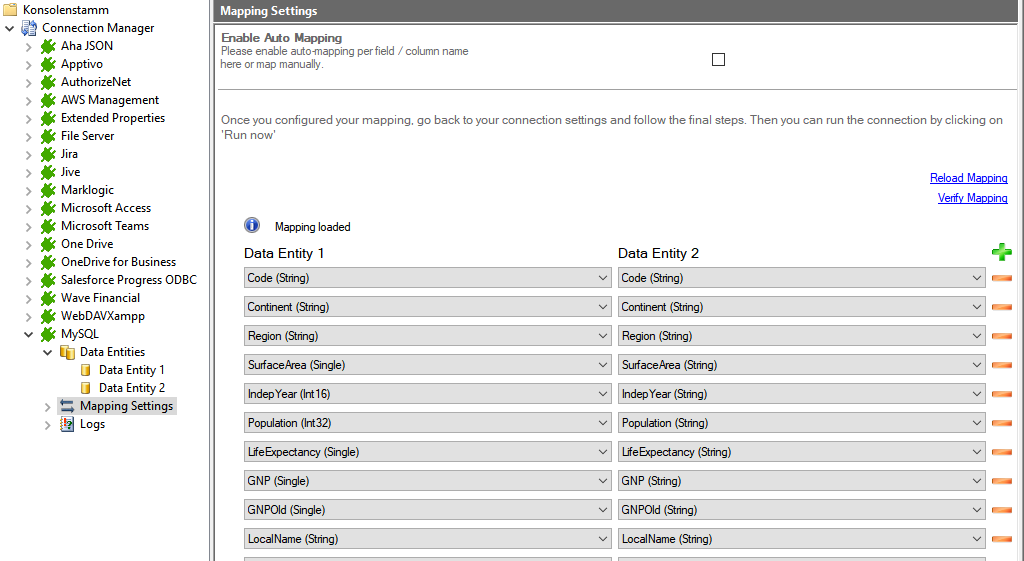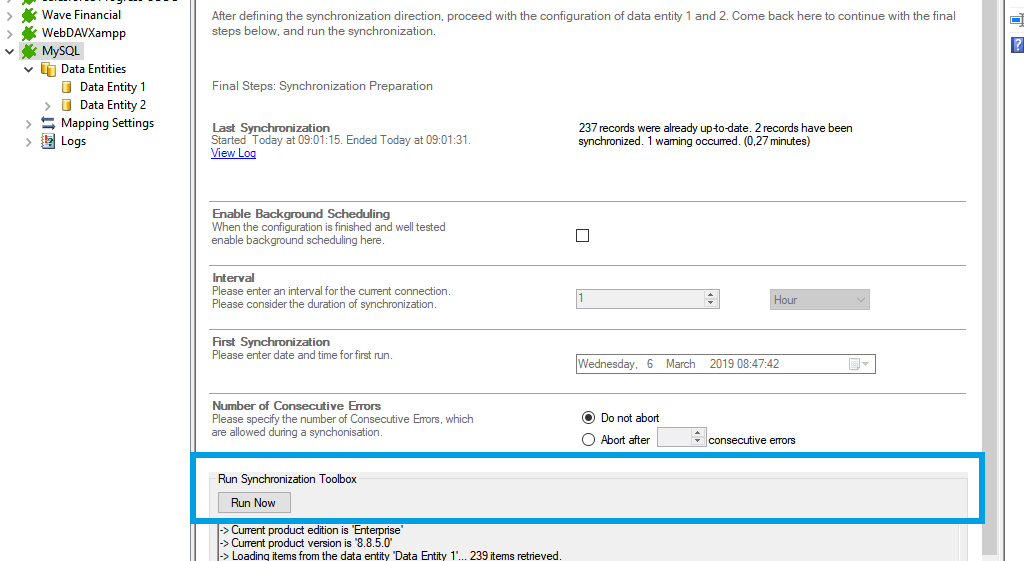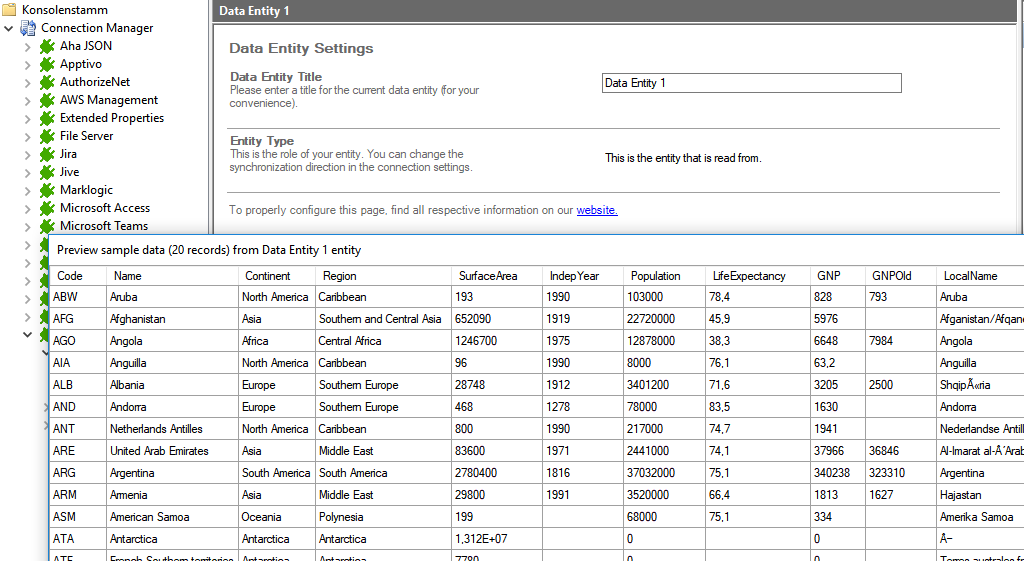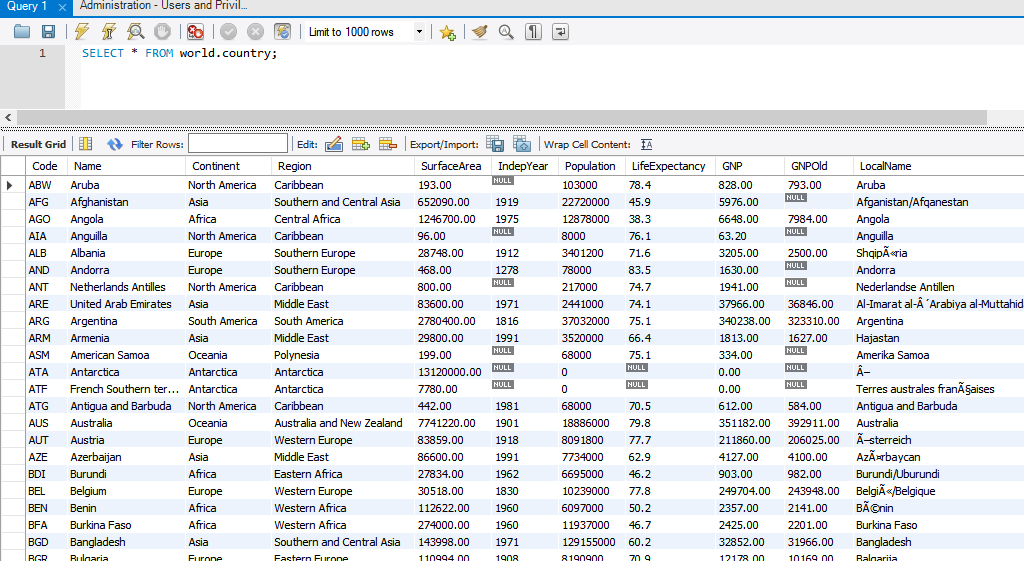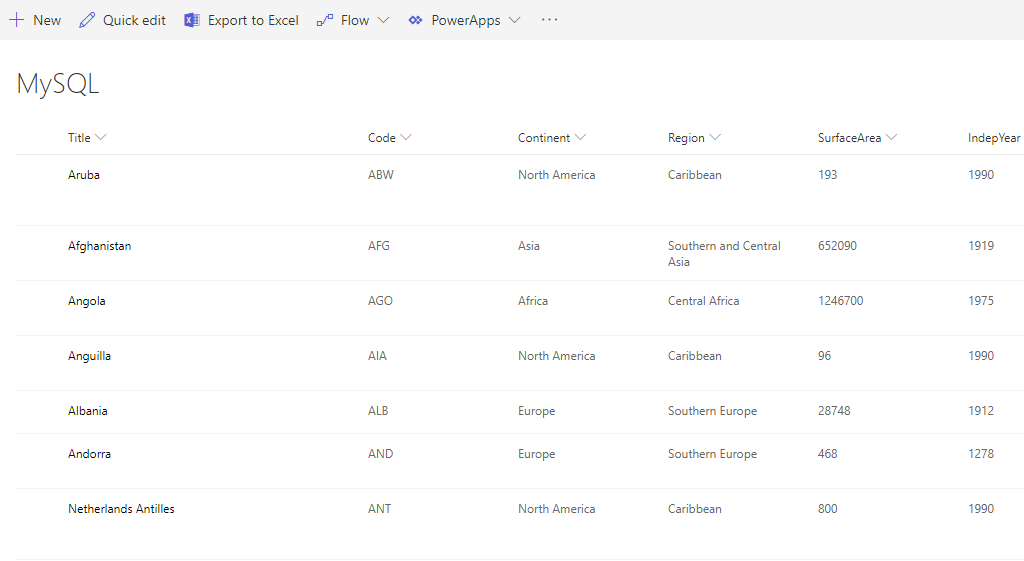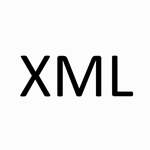Quick and easy installation in just minutes. Combine your data automatically in the background and benefit of better insights and greater revenues.
MySQL Data Integration
MySQL data can be integrated and synchronized
How it works
In fact, you only need to do the 5 following steps to get your
1: Set up your connection direction as required: one-way or two-way, in this case.
2: Set up your data source, in this case, MySQL.
3: Set up your target, for example, a Microsoft SharePoint list or library.
4: Set up your mapping.
5: Run your connection!
Benefits of using Layer2 Cloud Connector for Data Integration
MySQL Connection Settings & Intro tutorials
You can find here the Connection Settings for
Connection Settings for the .NET Framework Data Provider for MySQL Provider:
"How-to-connect" documentation of MySQL & SharePoint with .NET Framework Data Provider for MySQL Provider:
Connection String Example
data source=localhost;database=world;user id=mysqluser;
Select Statement Example
SELECT * FROM country

